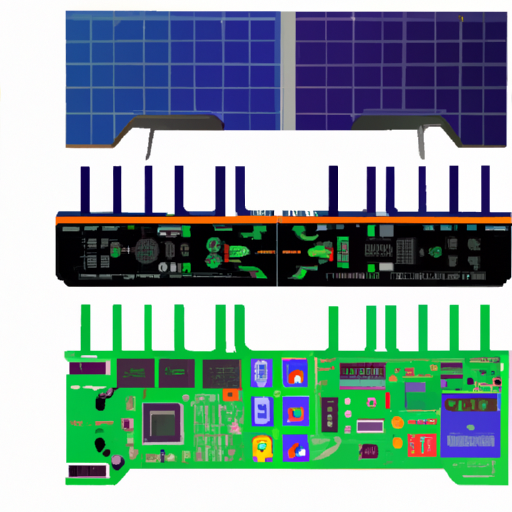The Ultimate Guide to Building LED Display Manufacturers
In the burgeoning world of LED display manufacturers, choosing reliable suppliers and understanding the industry's intricacies is critical to success. This guide delves deep into the world of LED displays, offering comprehensive insights into what it takes to build and succeed as a leading manufacturer.
Introduction to LED Display Manufacturing
As technology advances, LED displays are transforming numerous industries, from retail and advertising to transportation and entertainment. They offer unparalleled brightness, energy efficiency, and versatility.
What is an LED Display?
An LED (Light Emitting Diode) display is a flat panel display that uses an array of LEDs as pixels for a video display. Their high brightness and low energy consumption make them ideal for both indoor and outdoor applications.
Importance of LED Displays
The versatile nature of LED displays lends itself to a variety of uses:
- Advertising: Dynamic billboards and shop signs.
- Broadcasting: Stadium screens showing live scores and replays.
- Transport: Digital signage in airports and bus stations.
- Information dissemination: Public announcement systems.
Key Components of LED Displays
Any successful LED display manufacturer needs to have a profound understanding of the key components involved in the production process. Here are the essential parts:
LED Chips
LED chips are the heart of the LED display, determining factors such as color, brightness, and efficiency. High-quality chips from reputable brands like Cree and Nichia ensure product durability and performance.
Drivers
LED drivers regulate the flow of electricity to the LED chips, ensuring they operate within the specified parameters to maximize longevity and performance. Reliable manufacturers include Texas Instruments and Mean Well.
Modules
Modules house multiple LED chips and come in various resolutions, impacting the screen's visual clarity and application suitability. High-resolution modules are ideal for close-range advertising, while lower resolutions work better for large outdoor screens.
Control Systems
Control systems manage the input and output data, translating user commands into visual displays. Advanced control systems allow for real-time updates and remote management.
Cabinets and Frames
The physical framework, which houses all components, must be durable, lightweight, and heat-resistant. Materials like aluminum and certain plastics are frequently used.
Steps to Become a Leading LED Display Manufacturer
Building a reputable LED display manufacturing company involves more than assembling components. It requires strategic planning, quality assurance, and market insights.
Market Research and Feasibility Study
Understanding market demand, target audiences, and competition is crucial. Tools like SWOT analysis and PESTLE analysis can be instrumental in this phase.
Business Plan and Funding
A concrete business plan outlines your company’s objectives, strategies, and financial projections. Securing funding through investors or loans is often essential for initial setup and scaling operations.
Setting Up the Manufacturing Unit
- Location: Choose a strategically located site with ease of access to raw materials and transportation facilities.
- Equipment: Invest in cutting-edge manufacturing equipment for precision and efficiency.
- Workforce: Hire skilled professionals, including engineers and technicians.
Quality Control Systems
Implement robust quality control systems to ensure each unit meets industry standards. Regular testing at various stages of production can help identify and rectify flaws early.
Research and Development (R&D)
Continuous innovation is key to staying ahead in a competitive market. Allocate resources to R&D for the development of new technologies and products.
Marketing and Sales Strategies
Invest in effective marketing strategies to promote your brand. A blend of digital marketing, trade show participation, and direct sales can greatly enhance visibility.
Customer Support
Providing excellent after-sales service can turn your customers into brand advocates. Establish a responsive customer support system for troubleshooting and maintenance.
Industry Challenges and How to Overcome Them
Every industry has its challenges, and LED display manufacturing is no exception.
Technological Advancements
Keeping up with rapid technological changes can be tough. Investing in continuous R&D and staying updated with industry trends can mitigate this challenge.
High Initial Investment
The initial capital required can be hefty. Seeking government grants, joint ventures, and strategic partnerships can relieve some financial burden.
Supply Chain Management
Managing the supply chain efficiently is crucial to avoid disruptions in production. Building strong relationships with suppliers and using advanced supply chain software can help.
Competitive Market
Standing out in a crowded market requires a unique value proposition. Focus on quality, innovation, and customer service to differentiate your brand.
Case Studies: Successful LED Display Manufacturers
1. Absen
Absen has made a name for itself through its high-quality and innovative products, with a global presence in over 120 countries.
2. Daktronics
Known for its reliable and durable products, Daktronics excels in scoring and timing systems for sports, as well as commercial applications.
3. Unilumin
Unilumin focuses on providing cutting-edge solutions for both indoor and outdoor applications, emphasizing ultra-high resolution and interactivity.
Sustainability in LED Display Manufacturing
With increasing awareness about environmental issues, sustainability is becoming a significant focus.
Eco-friendly Materials
Opt for materials that are recyclable and have a lower environmental impact.
Energy Efficiency
Develop energy-efficient products to reduce power consumption.
Waste Management
Implement effective waste management systems to minimize and properly dispose of manufacturing waste.
Future Trends in LED Display Manufacturing
MicroLED and OLED Technologies
Advancements in MicroLED and OLED technologies promise higher brightness, improved color accuracy, and reduced power consumption.
Flexible and Transparent Displays
Flexible LED screens can conform to various shapes, while transparent displays offer new possibilities for retail and advertising.
Smart and Interactive Displays
Integration with AI and IoT can lead to smarter, interactive displays that provide real-time data and analytics.
Conclusion
Building a recognized LED display manufacturing company requires a detailed understanding of the industry, a focus on quality, and an innovative approach. By staying ahead of technological advancements and prioritizing customer satisfaction, manufacturers can thrive in this competitive landscape.
Whether you're looking to start a new venture or scale up an existing operation, the insights provided here offer a roadmap to success in the dynamic world of LED display manufacturing.

